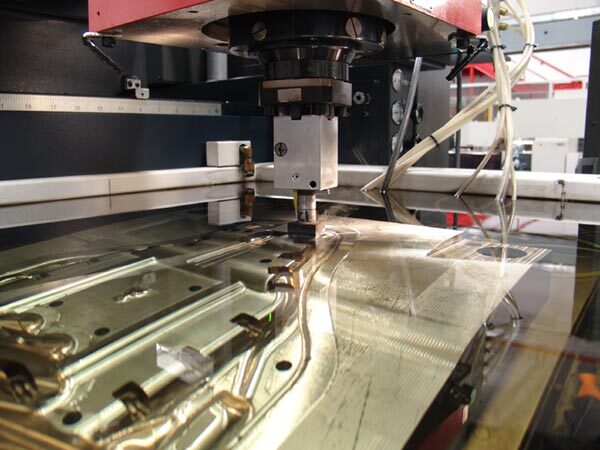Modeling EDM
For all its novelty, electrical discharge machining is a seemingly simple machining method, where sparking between an electrode and a workpiece causes the slow erosion of the workpiece. However, a closer inspection of the mechanisms through which sparking erodes metal reveals a complex set of physical processes whose relationships are not entirely understood. A single electrical discharge consists of the formation of a plasma channel through the breakdown of a dielectric, melting of workpiece material by the plasma, reformation of the dielectric, and subsequent flushing of molten material by the dielectric.1 When an oil-based dielectric is used, erosion of the workpiece can be accompanied by carbon deposition, which has interesting implications for the microscopic surface structure of both the electrode and the workpiece.1 The complexity of the EDM process means that innovation requires the development of sophisticated models, especially in micro EDM.
The development of efficient micro EDM methods would contribute greatly to the expansion of EDM applications, due to the general trend of smaller and more complex geometries in industry. Yet the widespread adoption of micro EDM has been hampered by both a slow material removal rate and low efficiency.2 Mujumdar et al. describe a model of micro electrical discharge plasma discharge in a deionized water dielectric that takes into account the chemistry of H2O plasma, power balance of electrons and neutrons, and plasma bubble growth.2 This model can be used to predict heat flux,2 bringing researchers a step closer to a thorough understanding of the micro EDM process. As machining grows more sophisticated, so do the models and computational tools used to describe it.
There are many variables that need to be considered in EDM, and some to a greater or lesser degree depending on the goal of machining. The complexity of input parameters and the conflicting nature of material removal rate and surface finish in particular have led Anitha, Das, and Pradhan to find an optimization of machining parameters using neural networks.3 A neural network approximates the structure of a brain, and gives a computer a similar natural learning ability. This combined with the raw computing power of a machine allows for the solving of very complex problems. The application of neural networks by Anitha et al., allowed for an increase in machining efficiency,3 and this approach seems promising for the future of EDM.
1. Ho, K. H., and S. T. Newman. “State of the art electrical discharge machining (EDM).” International Journal of Machine Tools and Manufacture 43, no. 13 (2003): 1287-1300.
2. Mujumdar, Soham S., Davide Curreli, Shiv G. Kapoor, and David Ruzic. “A model of micro electro-discharge machining plasma discharge in deionized water.” Journal of Manufacturing Science and Engineering 136, no. 3 (2014): 031011.
3. Anitha, J., Raja Dasa, and Mohan Kumar Pradhan. “Multi-Objective Optimization of Electrical Discharge Machining Processes Using Artificial Neural Network.” Jordan Journal of Mechanical & Industrial Engineering 10, no. 1 (2016).

